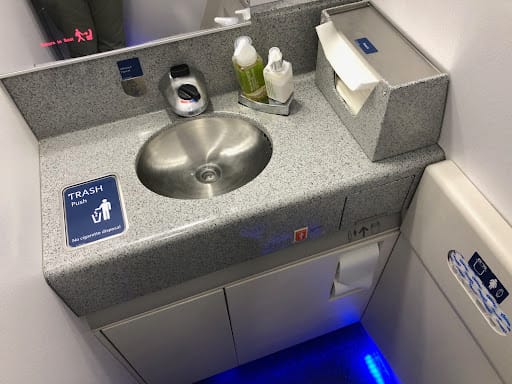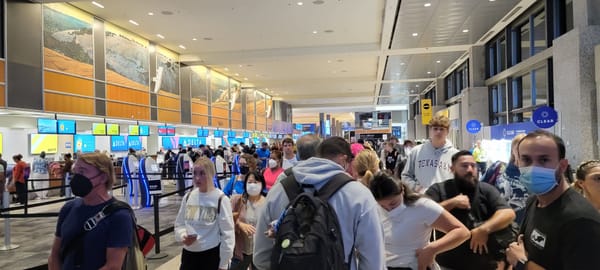How to Find Reliable Wi-Fi While Traveling: A Digital Nomad's Guide

Traveling as a digital nomad means you need reliable Wi-Fi to work and stay connected. Finding good internet can be tricky, but with the right strategies, you can ensure you have access to fast connections wherever you go. This guide will help you discover effective ways to find dependable Wi-Fi while exploring new places.
Key Takeaways
- Always check Wi-Fi reviews before booking a place to stay.
- Use speed test websites to find the best Wi-Fi spots in your area.
- Look for co-working spaces and cafes that cater to remote workers.
- Consider investing in a portable Wi-Fi device for backup internet.
- Be cautious with public Wi-Fi and take steps to protect your data.
The Eternal Quest for Reliable Wi-Fi: A Digital Nomad's Odyssey
As a digital nomad, finding reliable Wi-Fi is like searching for a unicorn in a forest of Wi-Fi dead zones. Without a solid connection, your work can go up in smoke faster than your morning coffee.
Why Wi-Fi Matters More Than Your Morning Coffee
- Work Efficiency: You can't send emails or attend video calls without it.
- Social Connection: Staying in touch with friends and family is crucial.
- Travel Planning: Need to book your next flight? Good luck without Wi-Fi!
The Hidden Costs of Unreliable Connections
Unreliable Wi-Fi can lead to:
- Lost Income: Missed deadlines mean missed paychecks.
- Frustration: Buffering videos and dropped calls can ruin your day.
- Extra Expenses: You might end up paying for overpriced data plans or co-working spaces just to get a decent connection.
How to Avoid Wi-Fi Nightmares
To dodge Wi-Fi disasters, consider these tips:
- Research Before You Go: Check reviews for Wi-Fi quality at your accommodation.
- Ask Locals: They often know the best spots for reliable connections.
- Use Portable Wi-Fi Devices: These can be your personal internet genie, ensuring you stay connected wherever you roam.
In the end, the quest for reliable Wi-Fi is not just about staying connected; it's about maintaining your sanity while living the digital nomad dream.
| Wi-Fi Quality | Impact on Work | Potential Costs |
|---|---|---|
| Excellent | Smooth sailing | Minimal |
| Good | Manageable | Moderate |
| Poor | Stressful | High |
Pre-Travel Wi-Fi Reconnaissance: Because Surprises Are for Birthdays
As a digital nomad, finding reliable Wi-Fi is like hunting for treasure. You can’t just wing it and hope for the best; you need a plan. Here’s how to do your homework before you land in a new place:
Stalking Accommodation Reviews for Wi-Fi Clues
- Check reviews on sites like Booking.com or Airbnb.
- Look for keywords like "Wi-Fi" or "internet" in the comments.
- Pay attention to recent reviews; things change fast!
Speed Test Websites: Your New Best Friends
Before you book, use speed test websites to gauge the Wi-Fi quality in your destination. Here’s a quick table of some popular options:
| Website | Purpose |
|---|---|
| Speedtest.net | General speed testing |
| Fast.com | Quick download speed check |
| Nperf.com | Comprehensive performance metrics |
Digital Nomad Forums: The Gossip Hubs of the Internet
- Join Facebook groups or forums dedicated to digital nomads.
- Ask for recommendations on reliable Wi-Fi spots.
- Don’t be shy; fellow nomads love to share their experiences!
Remember, a little research goes a long way. Don’t let bad Wi-Fi ruin your trip!
Accommodation Roulette: Betting on High-Speed Wi-Fi
When it comes to finding a place to stay, [high-speed Wi-Fi](https://www.nomadstays.com/) should be at the top of your list. After all, what’s the point of traveling if you can’t post your stunning beach selfies in real-time? Here’s how to make sure you’re not rolling the dice on your internet connection:
Interrogating Hosts Like a Pro
- Ask the Right Questions: Don’t just take the host’s word for it. Ask about the actual speed and reliability of the Wi-Fi. If they can’t provide proof, it’s time to move on.
- Look for Reviews: Check if previous guests have mentioned the Wi-Fi in their reviews. If you see phrases like "super-fast Wi-Fi" or "buffering nightmare," you know what to expect.
- Request a Speed Test: If you’re feeling bold, ask for a screenshot of a recent speed test. If they hesitate, it’s a red flag.
Co-Living Spaces: The Wi-Fi Sanctuaries
Co-living spaces are like the holy grail for digital nomads. They’re designed with remote work in mind, offering:
- Reliable High-Speed Wi-Fi: Most co-living spaces guarantee fast connections.
- Dedicated Workspaces: Say goodbye to working from your bed and hello to a proper desk.
- Community Vibes: Meet fellow nomads who understand your struggle for good internet.
The Art of Reading Between the Review Lines
Not all reviews are created equal. Here’s how to decode them:
- Look for Keywords: Search for terms like "Wi-Fi" or "internet" in reviews. If you see a lot of mentions, it’s worth noting.
- Check for Recent Reviews: Older reviews might not reflect the current state of the Wi-Fi. Look for recent feedback.
- Beware of Overly Positive Reviews: If every review sounds too good to be true, it probably is.
In the world of digital nomads, a reliable Wi-Fi connection is as essential as your morning coffee. Don’t settle for less!
Cafes and Co-Working Spaces: The Holy Grail of Reliable Wi-Fi
Apps and Websites to Find Your Wi-Fi Oasis
Finding a good spot to work can feel like searching for a needle in a haystack. Luckily, there are tools to help you locate the best cafes and co-working spaces. Here are some must-try options:
- Workfrom: This app helps you discover work-friendly cafes with reliable Wi-Fi.
- Nomad List: A community-driven platform that rates locations based on Wi-Fi quality and other amenities.
- Foursquare: Not just for food, it also provides user reviews on Wi-Fi quality in various establishments.
Etiquette 101: Don’t Be That Person
When you finally find your Wi-Fi oasis, remember to play nice. Here’s how to be a good digital nomad:
- Buy Something: Support the cafe by purchasing food or drinks. It’s only fair!
- Limit Your Time: Don’t hog a table for hours during peak hours. Be mindful of other customers.
- Keep It Down: Use headphones for calls and keep your voice low. Nobody wants to hear your life story while they sip their coffee.
Co-Working Spaces: More Than Just Wi-Fi
Co-working spaces are the holy grail for digital nomads. They offer more than just a connection; they provide a community. Here’s what to expect:
- High-Speed Internet: Forget about buffering; enjoy seamless video calls and downloads.
- Networking Opportunities: Meet like-minded individuals who might just become your next collaborator.
- Professional Amenities: From meeting rooms to printers, co-working spaces have everything you need to get the job done.
In the world of digital nomadism, finding a reliable Wi-Fi spot is not just a convenience; it’s a necessity.
Portable Wi-Fi Devices: Your Personal Internet Genie
Choosing the Right Device for Your Needs
When it comes to portable Wi-Fi devices, you have options galore! Here’s a quick rundown of what you might consider:
- Pocket Wi-Fi Rental: Perfect for short trips, these devices can be rented at airports. They provide a strong connection and are usually affordable.
- USB Dongles: These little gadgets plug into your laptop and give you internet access. They’re compact and favored by solo travelers.
- Specialized Solutions: For those who venture into the wild, specialized devices like satellite internet can keep you connected even in the most remote areas.
Data Plans: The Fine Print You Can’t Ignore
Before you get too excited about your new gadget, remember to read the fine print on data plans. Here’s what to look out for:
- Coverage: Ensure your device works in the countries you plan to visit.
- Speed: Check if the device offers fast enough internet for your needs.
- Cost: Compare plans to find one that fits your budget without hidden fees.
The Limitations No One Tells You About
Even the best portable Wi-Fi devices have their downsides. Here are a few:
- Battery Life: Many devices can’t last all day, so keep a charger handy.
- Connection Issues: Sometimes, you might find yourself in a dead zone, even with the best device.
- Data Caps: Watch out for limits on how much data you can use, or you might end up paying extra.
In the world of digital nomads, a reliable internet connection is as essential as your morning coffee. Without it, you might as well be in a cave!
Public Wi-Fi Networks: The Double-Edged Sword

Where to Find Public Wi-Fi Without Losing Your Mind
Public Wi-Fi is like that free sample at the grocery store: tempting but often a little sketchy. You can find it in places like:
- Cafes: Perfect for sipping overpriced coffee while pretending to work.
- Airports: Because who doesn’t want to risk their data while waiting for a delayed flight?
- Parks: Enjoy nature while your personal information is up for grabs.
Security Risks: The Dark Side of Free Wi-Fi
Using public Wi-Fi can feel like a gamble. Here are some risks to consider:
- Unencrypted networks: Your data is like an open book.
- Malicious hotspots: Someone could set up a fake network just to steal your info.
- Man-in-the-middle attacks: Your data could be intercepted without you even knowing.
Public Wi-Fi can save you money on your data plan, but it’s a dangerous playground. Always think twice before connecting.
How to Protect Yourself While Using Public Wi-Fi
If you must use public Wi-Fi, here are some tips to keep your data safe:
- Use a VPN: This encrypts your data and hides your online activities.
- Avoid sensitive transactions: Don’t check your bank account or make purchases.
- Turn off sharing: Keep your files to yourself.
In the end, public Wi-Fi is a double-edged sword. It can be convenient, but it’s essential to stay vigilant and protect your data.
Wi-Fi Finder Apps: The Digital Nomad’s Treasure Map

Top Apps to Keep You Connected
Finding reliable Wi-Fi can feel like searching for buried treasure. Luckily, there are apps that can help you on this quest. Here are some of the best:
- Wi-Fi Map: A crowdsourced app that shows Wi-Fi hotspots, complete with passwords and user reviews. It’s like having a treasure map in your pocket!
- Instabridge: This app connects you to shared Wi-Fi networks, eliminating the need for costly roaming fees. It’s perfect for travelers who want to stay connected without breaking the bank.
- Foursquare: Not just for finding restaurants, Foursquare also provides user reviews on Wi-Fi quality at various locations. It’s a great way to avoid those dreaded Wi-Fi nightmares.
Crowdsourced Wi-Fi: Trusting Strangers with Your Internet
Using crowdsourced apps can be a gamble, but they often pay off. Here’s why:
- Real User Feedback: You get insights from fellow travelers about the quality of the connection.
- Updated Information: Users frequently update the data, so you’re less likely to end up in a Wi-Fi trap.
- Community Support: You’re part of a network of digital nomads who share tips and tricks.
The Pros and Cons of Wi-Fi Finder Apps
While these apps can be lifesavers, they come with their own set of challenges. Here’s a quick rundown:
| Pros | Cons |
|---|---|
| Access to user-generated data | Reliability can vary |
| Saves time in finding Wi-Fi | May lead to overcrowded spots |
| Helps avoid tourist traps | Not all hotspots are secure |
In the world of digital nomads, Wi-Fi finder apps are like a lifeline. They can make the difference between a productive day and a frustrating one.
So, whether you’re in a bustling city or a remote beach, these apps can help you navigate the digital landscape with ease. Happy hunting!
Offline Tools and Apps: When Wi-Fi Fails You

When you’re out there chasing Wi-Fi like it’s the last slice of pizza, it’s easy to forget that sometimes, you just won’t find it. Offline tools and apps can be your saving grace when the internet decides to play hide and seek. Here’s how to keep your productivity alive even when the Wi-Fi gods are not smiling upon you.
Must-Have Offline Apps for Digital Nomads
- Google Docs: Create and edit documents without an internet connection. Just remember to sync when you’re back online!
- Trello: Organize your tasks and projects with this handy project management tool.
- Evernote: Take notes, save images, and record audio, all while offline.
Syncing Data: The Art of Going Offline Gracefully
- Choose the Right Apps: Make sure your apps have offline capabilities.
- Sync Regularly: Don’t forget to sync your data when you’re back online to avoid losing your hard work.
- Backup Important Files: Always have a backup plan for your important documents.
Why You Should Always Have a Backup Plan
In the world of digital nomads, having a backup internet connection is not just a luxury; it’s a necessity. Whether it’s a mobile data plan or a portable Wi-Fi device, being prepared can save you from a lot of headaches.
So, while you’re out there exploring the world, don’t forget to pack your offline tools. They might just be the lifeline you need when Wi-Fi fails you!
The Future of Wi-Fi for Digital Nomads: What’s Next?
Emerging Technologies to Watch
The world of Wi-Fi is evolving faster than you can say "buffering." Here are some exciting technologies that could change the game for digital nomads:
- Wi-Fi 6: This new standard promises faster speeds and better performance in crowded areas. Say goodbye to slow connections in busy cafes!
- Mesh Networks: These systems use multiple devices to create a seamless Wi-Fi experience. Perfect for co-living spaces where you need coverage in every nook and cranny.
- Li-Fi: Yes, you read that right! This technology uses light to transmit data. Imagine working in a sunlit café and getting super-fast internet through the light bulbs!
How 5G Will Change the Game
5G is not just a buzzword; it’s a revolution. Here’s how it will impact digital nomads:
- Lightning-Fast Speeds: Downloading large files will be a breeze, making remote work less of a hassle.
- Lower Latency: This means less lag during video calls, which is crucial for those awkward work meetings.
- Wider Coverage: More areas will have access to high-speed internet, even in remote locations.
The Role of Satellite Internet in Remote Work
Satellite internet is no longer just for astronauts. Here’s why it’s becoming a viable option for digital nomads:
- Global Coverage: No matter where you are, as long as you can see the sky, you can get online.
- Reliability: Unlike traditional connections, satellite internet can be more stable in remote areas.
- Emerging Providers: Companies like Starlink are making satellite internet more accessible and affordable.
In a world where Wi-Fi is as essential as your morning coffee, staying ahead of the curve is crucial for digital nomads.
With these advancements, the future looks bright for those who roam the globe while working remotely. Keep your eyes peeled for these changes, and you might just find yourself in a Wi-Fi paradise!
The Social Aspect: Building a Community While Chasing Wi-Fi
Networking in Co-Working Spaces
Finding reliable Wi-Fi is only half the battle; the other half is making friends while you’re at it. Co-working spaces are like the watering holes of the digital nomad world. Here, you can:
- Meet like-minded individuals who understand your struggle for a good connection.
- Share tips on the best local Wi-Fi spots, because who doesn’t love a good Wi-Fi gossip?
- Collaborate on projects, or at least pretend to while you scroll through social media.
Joining Digital Nomad Meetups
If you think you can just sit in a corner and work, think again! Joining meetups is essential. Here’s why:
- Expand your network: You never know who might have the next big opportunity.
- Learn from others: Everyone has a story, and some might even have better Wi-Fi tales than yours.
- Find your tribe: Because let’s face it, not everyone understands the nomadic lifestyle.
The Importance of Social Media Groups
Social media isn’t just for posting your avocado toast; it’s a lifeline for digital nomads. Here’s how:
- Stay updated on local events and Wi-Fi hotspots.
- Ask for advice on where to find the best connections.
- Share your experiences and learn from others’ mistakes (like that time you bought a $7 beer for bad Wi-Fi).
Building a community while chasing Wi-Fi is not just about finding a connection; it’s about creating lasting relationships that can help you navigate the ups and downs of remote work. Don’t underestimate the power of a good Wi-Fi buddy!
The Ultimate Wi-Fi Survival Kit: What Every Digital Nomad Needs

As a digital nomad, your Wi-Fi survival kit is as essential as your passport. Without it, you might as well be trying to send smoke signals from a remote island. Here’s what you absolutely need to keep your connection strong and your work flowing:
Essential Gadgets for Staying Connected
- Portable Wi-Fi Device: This little gadget is your best friend. It allows you to create your own Wi-Fi network wherever you go. Think of it as your personal internet genie, granting you access to the web in the most unexpected places.
- Universal SIM Card: Avoid those pesky roaming charges. A universal SIM card gives you reliable mobile data, especially in areas where Wi-Fi is as rare as a unicorn.
- VPN: Protect your online presence. A VPN keeps your data safe and allows you to access content that might be blocked in certain countries. It’s like wearing a digital cloak of invisibility.
Travel Insurance for Your Tech
- Coverage for Gadgets: Make sure your travel insurance covers your tech. If your laptop takes a dive into the pool, you’ll want to be covered.
- Emergency Plans for Wi-Fi Outages: Always have a backup plan. Whether it’s a local café or a co-working space, know where to go when your Wi-Fi fails you.
Emergency Plans for Wi-Fi Outages
- Identify Local Co-Working Spaces: These are often equipped with high-speed internet and a community of like-minded individuals.
- Find Cafes with Good Reviews: Look for places that cater to digital nomads. A good cup of coffee and reliable Wi-Fi can save your day.
- Download Offline Apps: Have essential apps ready to go offline. This way, you can still work even when the internet decides to play hide and seek.
Remember: The key to a successful digital nomad lifestyle is preparation. Don’t wait for a Wi-Fi crisis to hit; be ready with your survival kit!
If you're a digital nomad, having the right Wi-Fi gear is essential for staying connected on the go. Check out our ultimate guide to building your Wi-Fi survival kit and ensure you're always online, no matter where your adventures take you. For more tips and tricks, visit our website!
Final Thoughts on Wi-Fi Hunting
So, there you have it! Finding reliable Wi-Fi while traveling can feel like a wild goose chase, but with the right tips, you can avoid the dreaded "Wi-Fi not found" panic. Remember, it’s all about doing your homework, asking fellow nomads, and maybe even investing in a portable hotspot. Sure, you might have to sip overpriced coffee in a cafe just to get a decent connection, but hey, at least you can pretend to be working while scrolling through social media. In the end, whether you’re in a bustling city or a quiet beach, a little planning goes a long way. Happy surfing!
Frequently Asked Questions
Why is reliable Wi-Fi important for digital nomads?
Reliable Wi-Fi is crucial for digital nomads because it allows them to work remotely, stay connected with clients, and enjoy leisure activities online.
How can I check Wi-Fi availability before I travel?
You can check Wi-Fi availability by reading reviews on accommodation websites, using speed test websites, and joining digital nomad forums.
What types of places usually have good Wi-Fi?
Cafes, co-working spaces, and certain hotels often provide good Wi-Fi, especially those that cater to digital nomads.
What should I look for in a portable Wi-Fi device?
When choosing a portable Wi-Fi device, consider its coverage, speed, and battery life to ensure it meets your needs.
Are public Wi-Fi networks safe to use?
Public Wi-Fi can be risky. Always use a VPN and avoid accessing sensitive information when connected to public networks.
What are some good apps for finding Wi-Fi?
Apps like Wi-Fi Map and Instabridge help you find Wi-Fi hotspots and provide user reviews on connection quality.
How can I stay productive without Wi-Fi?
You can use offline apps to work, sync your data later, and always have a backup plan for internet access.
What future trends should digital nomads be aware of regarding Wi-Fi?
Emerging technologies like 5G and satellite internet are expected to improve connectivity options for digital nomads.




